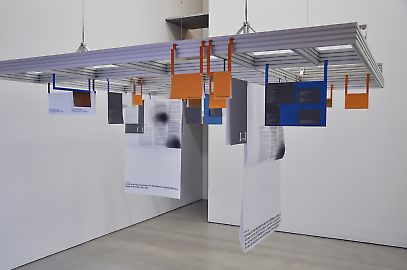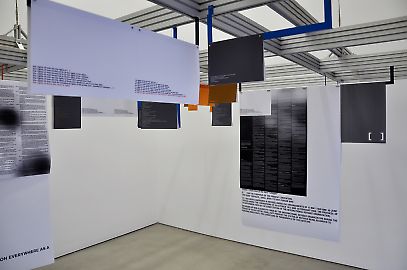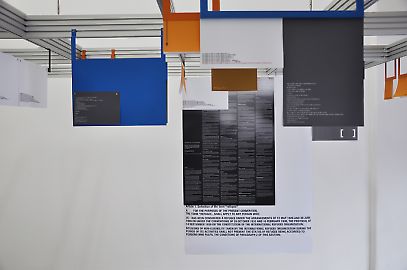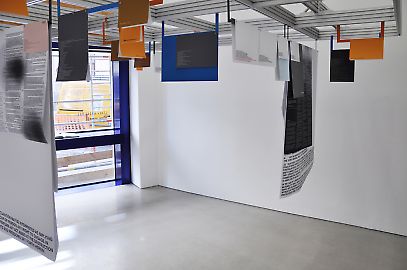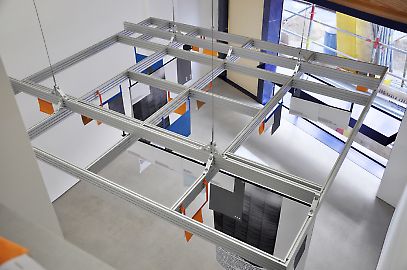Thomas Locher -- suspended
In his fourth individual exhibition, his first at Georg Kargl BOX, Thomas Locher presents his new installation Suspended. The work is a textual, topological display hanging from the ceiling of the exhibition space, a spatial, object work about space, location, and placelessness. With this object, the artist picks up on earlier works and exhibition presentations that included the proposition that written or spoken language has a spatial impact and territorializing significance. Formally speaking, Suspended corresponds to a model to provide orientation, with arrows and pointers, with text and commentary, with a front and rear, with layers and overlaps, with side views and superimpositions. The spatial structure allows the beholder to see or to read the work from the “outside” and from the “inside,” to stand inside or outside the work, indeed in general to pose the question of where the inside or the outside might be. For the work itself tries to give form to the problematic of the undecidability of inside and outside of law. To that extent, the installation is more an arrangement of a lack of orientation.
In Homo Sacer, G. Agamben describes the site of undecidability between law and violence, between validity and exception, between inside and outside using a spatial, topological model. Despite the permanent appeal and invocation of human rights, their suspension has become common practice in current policy making. People are systematically persecuted, expelled, or treated inhumanely without being able to claim their rights. Ever since their fundamental formulation, the refugee has been the central figure of human rights. Originally termed a “displaced person,” he is dependent on the arbitrary decision of a country ready to take him in, a permanent refugee without any claim to citizenship or any kind of legal security. The formulated claim to a certain right, to be able to assert rights, thus proves empty. Human rights are the rights of those who have no rights. The only asserted rights belong to the citizens of nation-states governed by the rule of law. Human rights thus prove to be paradoxical rights addressed at poor, not public, and apolitical individuals.
In the legal format of the state of emergency, intended as a limited period in crisis situations, the political praxis of the suspending of basic rights finds its most intense expression. For he who controls the legal power to suspend the validity of law (for example, to declare a state of emergency), that is, to suspend law, places himself outside the law. Sovereign power is thus located both outside and inside the law. In this installation, the attempt is made to give form to the various contradictions and paradoxes of human rights. In so doing, the political power of sovereignty is not present in this work. It goes unmentioned; it is not directly illustrated or represented. But as an absent threat, it remains entirely real.


